Giulio Rossolini
Exploiting Edge Features for Transferable Adversarial Attacks in Distributed Machine Learning
Jul 09, 2025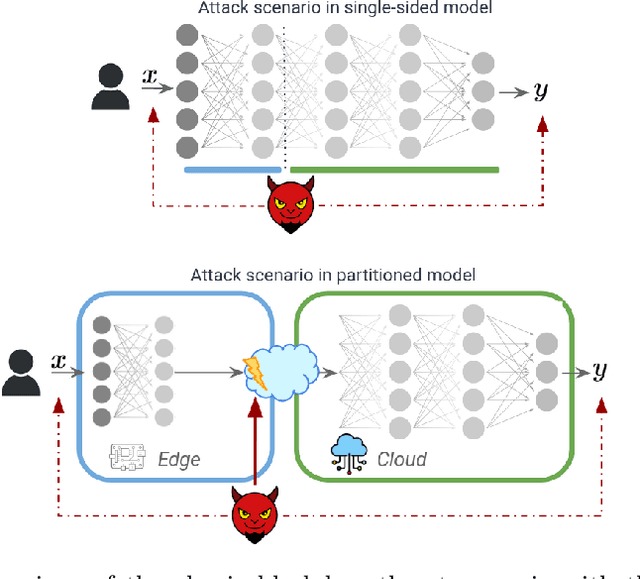
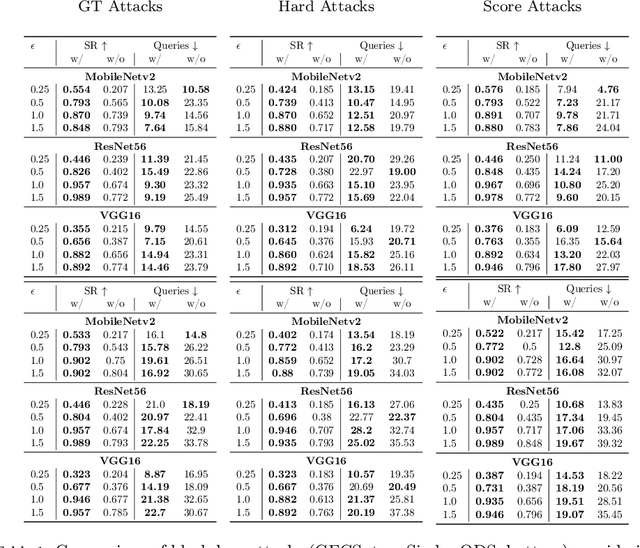
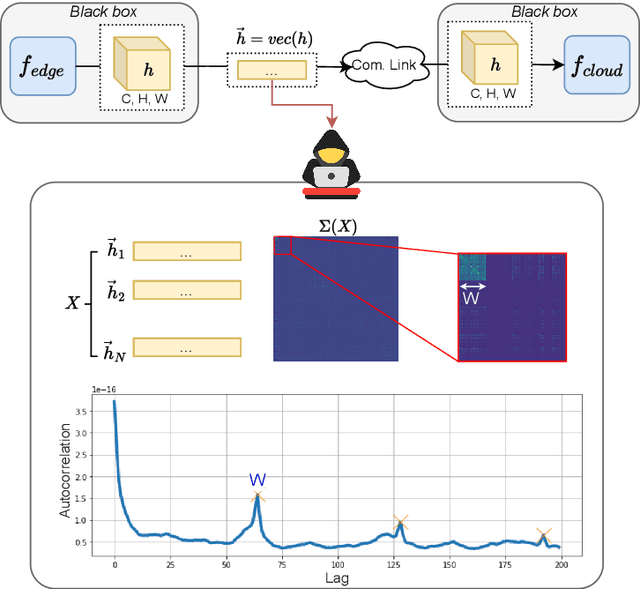
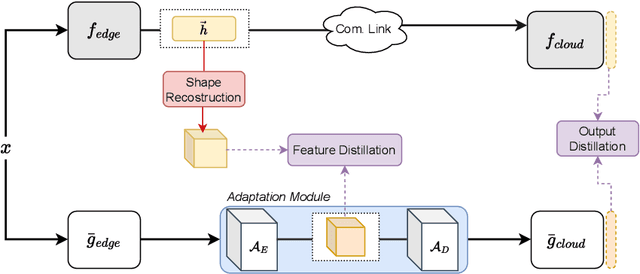
Abstract:As machine learning models become increasingly deployed across the edge of internet of things environments, a partitioned deep learning paradigm in which models are split across multiple computational nodes introduces a new dimension of security risk. Unlike traditional inference setups, these distributed pipelines span the model computation across heterogeneous nodes and communication layers, thereby exposing a broader attack surface to potential adversaries. Building on these motivations, this work explores a previously overlooked vulnerability: even when both the edge and cloud components of the model are inaccessible (i.e., black-box), an adversary who intercepts the intermediate features transmitted between them can still pose a serious threat. We demonstrate that, under these mild and realistic assumptions, an attacker can craft highly transferable proxy models, making the entire deep learning system significantly more vulnerable to evasion attacks. In particular, the intercepted features can be effectively analyzed and leveraged to distill surrogate models capable of crafting highly transferable adversarial examples against the target model. To this end, we propose an exploitation strategy specifically designed for distributed settings, which involves reconstructing the original tensor shape from vectorized transmitted features using simple statistical analysis, and adapting surrogate architectures accordingly to enable effective feature distillation. A comprehensive and systematic experimental evaluation has been conducted to demonstrate that surrogate models trained with the proposed strategy, i.e., leveraging intermediate features, tremendously improve the transferability of adversarial attacks. These findings underscore the urgent need to account for intermediate feature leakage in the design of secure distributed deep learning systems.
Leveraging Knowledge Graphs and LLMs for Structured Generation of Misinformation
May 30, 2025Abstract:The rapid spread of misinformation, further amplified by recent advances in generative AI, poses significant threats to society, impacting public opinion, democratic stability, and national security. Understanding and proactively assessing these threats requires exploring methodologies that enable structured and scalable misinformation generation. In this paper, we propose a novel approach that leverages knowledge graphs (KGs) as structured semantic resources to systematically generate fake triplets. By analyzing the structural properties of KGs, such as the distance between entities and their predicates, we identify plausibly false relationships. These triplets are then used to guide large language models (LLMs) in generating misinformation statements with varying degrees of credibility. By utilizing structured semantic relationships, our deterministic approach produces misinformation inherently challenging for humans to detect, drawing exclusively upon publicly available KGs (e.g., WikiGraphs). Additionally, we investigate the effectiveness of LLMs in distinguishing between genuine and artificially generated misinformation. Our analysis highlights significant limitations in current LLM-based detection methods, underscoring the necessity for enhanced detection strategies and a deeper exploration of inherent biases in generative models.
Benchmarking the Spatial Robustness of DNNs via Natural and Adversarial Localized Corruptions
Apr 02, 2025

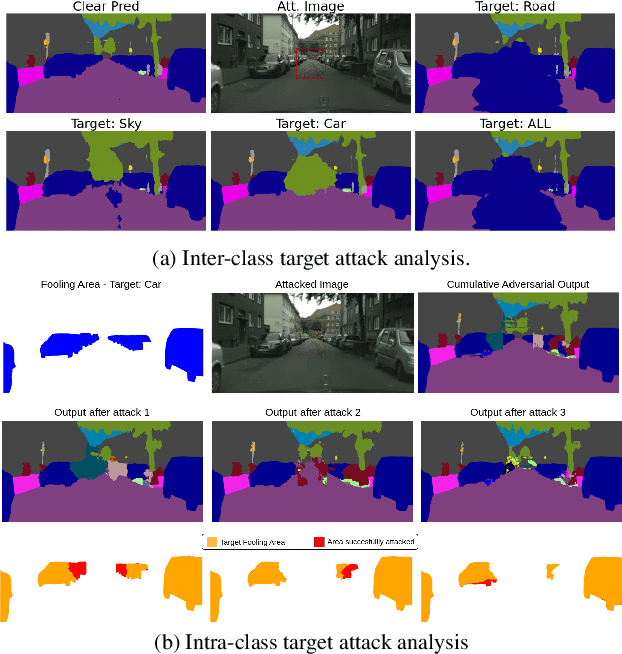

Abstract:The robustness of DNNs is a crucial factor in safety-critical applications, particularly in complex and dynamic environments where localized corruptions can arise. While previous studies have evaluated the robustness of semantic segmentation (SS) models under whole-image natural or adversarial corruptions, a comprehensive investigation into the spatial robustness of dense vision models under localized corruptions remained underexplored. This paper fills this gap by introducing specialized metrics for benchmarking the spatial robustness of segmentation models, alongside with an evaluation framework to assess the impact of localized corruptions. Furthermore, we uncover the inherent complexity of characterizing worst-case robustness using a single localized adversarial perturbation. To address this, we propose region-aware multi-attack adversarial analysis, a method that enables a deeper understanding of model robustness against adversarial perturbations applied to specific regions. The proposed metrics and analysis were evaluated on 15 segmentation models in driving scenarios, uncovering key insights into the effects of localized corruption in both natural and adversarial forms. The results reveal that models respond to these two types of threats differently; for instance, transformer-based segmentation models demonstrate notable robustness to localized natural corruptions but are highly vulnerable to adversarial ones and vice-versa for CNN-based models. Consequently, we also address the challenge of balancing robustness to both natural and adversarial localized corruptions by means of ensemble models, thereby achieving a broader threat coverage and improved reliability for dense vision tasks.
Video Deblurring by Sharpness Prior Detection and Edge Information
Jan 21, 2025Abstract:Video deblurring is essential task for autonomous driving, facial recognition, and security surveillance. Traditional methods directly estimate motion blur kernels, often introducing artifacts and leading to poor results. Recent approaches utilize the detection of sharp frames within video sequences to enhance deblurring. However, existing datasets rely on fixed number of sharp frames, which may be too restrictive for some applications and may introduce a bias during model training. To address these limitations and enhance domain adaptability, this work first introduces GoPro Random Sharp (GoProRS), a new dataset where the the frequency of sharp frames within the sequence is customizable, allowing more diverse training and testing scenarios. Furthermore, it presents a novel video deblurring model, called SPEINet, that integrates sharp frame features into blurry frame reconstruction through an attention-based encoder-decoder architecture, a lightweight yet robust sharp frame detection and an edge extraction phase. Extensive experimental results demonstrate that SPEINet outperforms state-of-the-art methods across multiple datasets, achieving an average of +3.2% PSNR improvement over recent techniques. Given such promising results, we believe that both the proposed model and dataset pave the way for future advancements in video deblurring based on the detection of sharp frames.
Edge-Only Universal Adversarial Attacks in Distributed Learning
Nov 15, 2024



Abstract:Distributed learning frameworks, which partition neural network models across multiple computing nodes, enhance efficiency in collaborative edge-cloud systems but may also introduce new vulnerabilities. In this work, we explore the feasibility of generating universal adversarial attacks when an attacker has access to the edge part of the model only, which consists in the first network layers. Unlike traditional universal adversarial perturbations (UAPs) that require full model knowledge, our approach shows that adversaries can induce effective mispredictions in the unknown cloud part by leveraging key features on the edge side. Specifically, we train lightweight classifiers from intermediate features available at the edge, i.e., before the split point, and use them in a novel targeted optimization to craft effective UAPs. Our results on ImageNet demonstrate strong attack transferability to the unknown cloud part. Additionally, we analyze the capability of an attacker to achieve targeted adversarial effect with edge-only knowledge, revealing intriguing behaviors. By introducing the first adversarial attacks with edge-only knowledge in split inference, this work underscores the importance of addressing partial model access in adversarial robustness, encouraging further research in this area.
Concise Thoughts: Impact of Output Length on LLM Reasoning and Cost
Jul 29, 2024



Abstract:Today's large language models (LLMs) can solve challenging question-answering tasks, and prompt engineering techniques, such as chain-of-thought (CoT), have gained attention for enhancing the explanation and correctness of outputs. Nevertheless, models require significant time to generate answers augmented with lengthy reasoning details. To address this issue, this paper analyzes the impact of output lengths on LLM inference pipelines and proposes novel metrics to evaluate them in terms of \textit{correct conciseness}. It also examines the impact of controlling output length through a refined prompt engineering strategy, Constrained-CoT (CCoT), which encourages the model to limit output length. Experiments on pre-trained LLMs demonstrated the benefit of the proposed metrics and the effectiveness of CCoT across different models. For instance, constraining the reasoning of LLaMA2-70b to 100 words improves the accuracy from 36.01\% (CoT) to 41.07\% (CCoT) on the GSM8K dataset, while reducing the average output length by 28 words.
Attention-Based Real-Time Defenses for Physical Adversarial Attacks in Vision Applications
Nov 19, 2023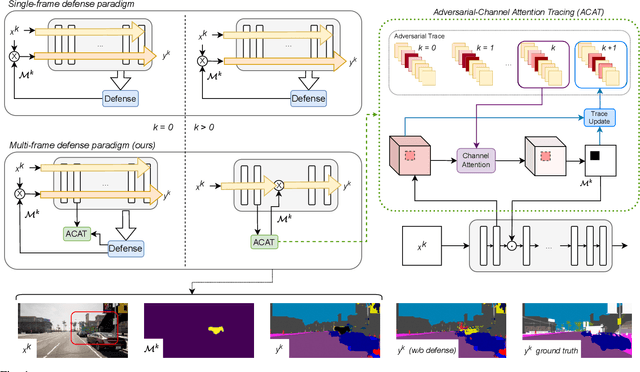
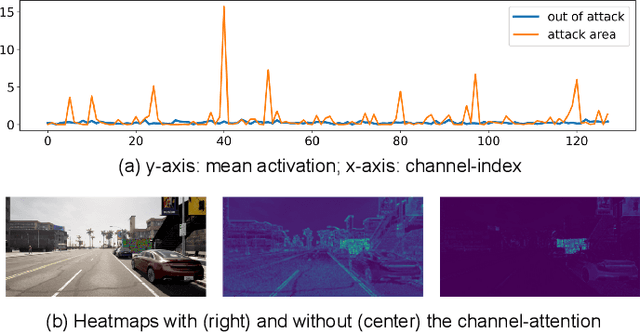
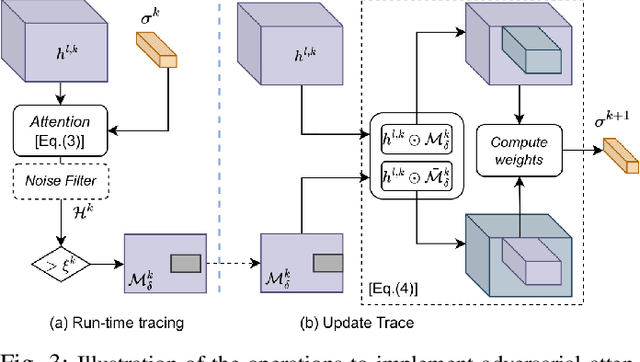
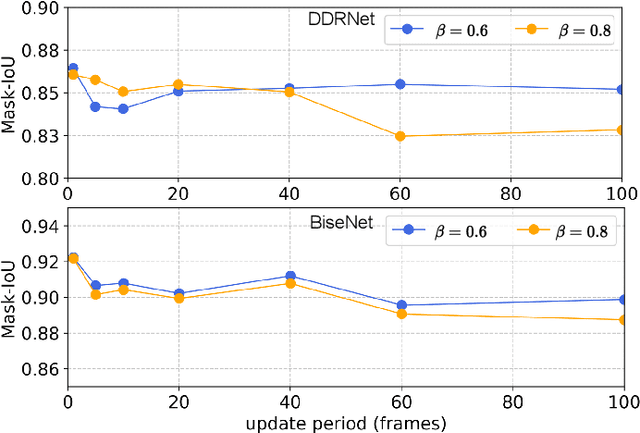
Abstract:Deep neural networks exhibit excellent performance in computer vision tasks, but their vulnerability to real-world adversarial attacks, achieved through physical objects that can corrupt their predictions, raises serious security concerns for their application in safety-critical domains. Existing defense methods focus on single-frame analysis and are characterized by high computational costs that limit their applicability in multi-frame scenarios, where real-time decisions are crucial. To address this problem, this paper proposes an efficient attention-based defense mechanism that exploits adversarial channel-attention to quickly identify and track malicious objects in shallow network layers and mask their adversarial effects in a multi-frame setting. This work advances the state of the art by enhancing existing over-activation techniques for real-world adversarial attacks to make them usable in real-time applications. It also introduces an efficient multi-frame defense framework, validating its efficacy through extensive experiments aimed at evaluating both defense performance and computational cost.
TrainSim: A Railway Simulation Framework for LiDAR and Camera Dataset Generation
Feb 28, 2023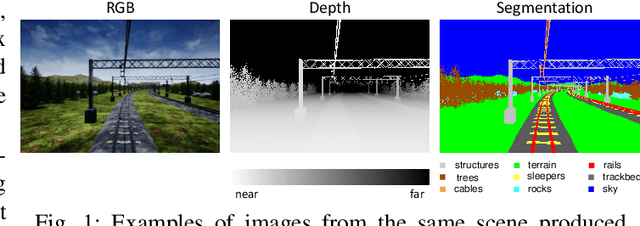
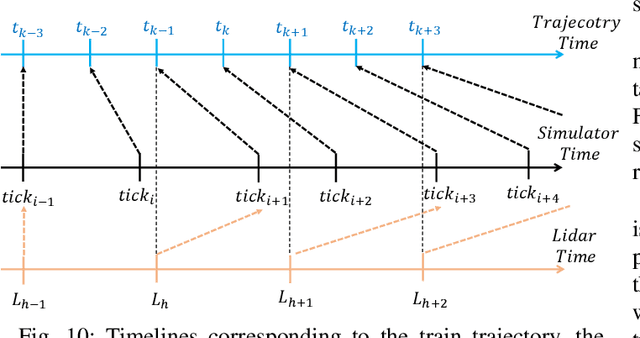
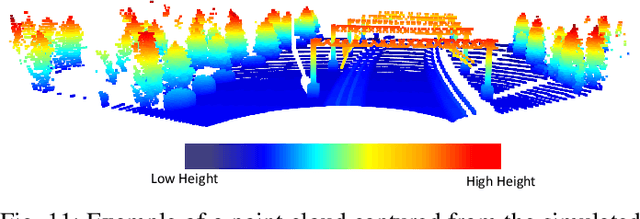
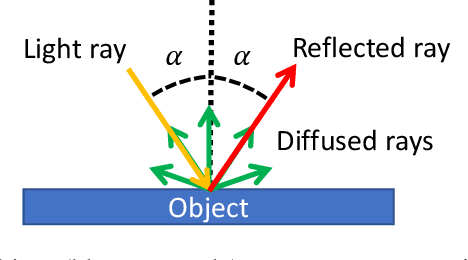
Abstract:The railway industry is searching for new ways to automate a number of complex train functions, such as object detection, track discrimination, and accurate train positioning, which require the artificial perception of the railway environment through different types of sensors, including cameras, LiDARs, wheel encoders, and inertial measurement units. A promising approach for processing such sensory data is the use of deep learning models, which proved to achieve excellent performance in other application domains, as robotics and self-driving cars. However, testing new algorithms and solutions requires the availability of a large amount of labeled data, acquired in different scenarios and operating conditions, which are difficult to obtain in a real railway setting due to strict regulations and practical constraints in accessing the trackside infrastructure and equipping a train with the required sensors. To address such difficulties, this paper presents a visual simulation framework able to generate realistic railway scenarios in a virtual environment and automatically produce inertial data and labeled datasets from emulated LiDARs and cameras useful for training deep neural networks or testing innovative algorithms. A set of experimental results are reported to show the effectiveness of the proposed approach.
Robust-by-Design Classification via Unitary-Gradient Neural Networks
Sep 09, 2022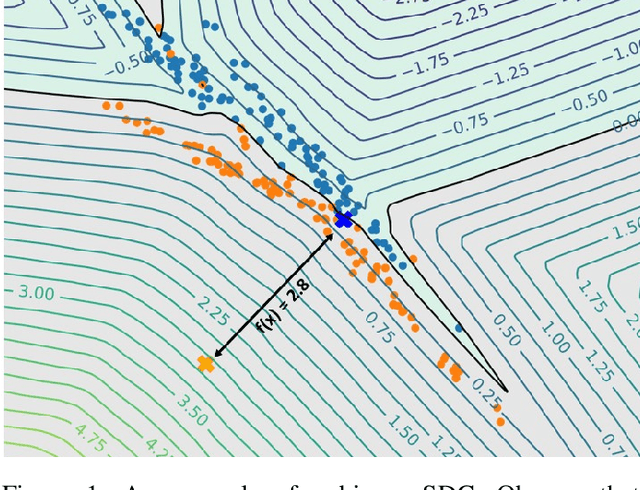
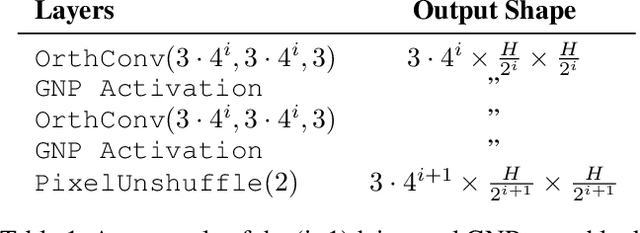
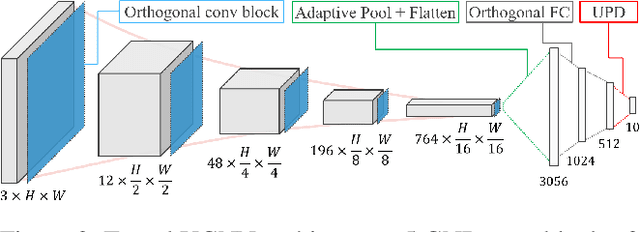
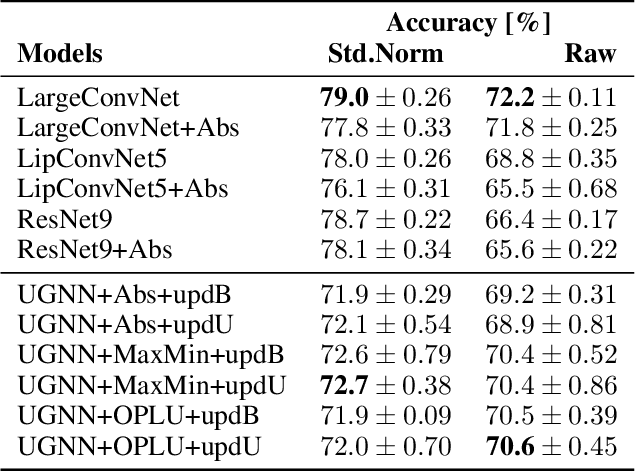
Abstract:The use of neural networks in safety-critical systems requires safe and robust models, due to the existence of adversarial attacks. Knowing the minimal adversarial perturbation of any input x, or, equivalently, knowing the distance of x from the classification boundary, allows evaluating the classification robustness, providing certifiable predictions. Unfortunately, state-of-the-art techniques for computing such a distance are computationally expensive and hence not suited for online applications. This work proposes a novel family of classifiers, namely Signed Distance Classifiers (SDCs), that, from a theoretical perspective, directly output the exact distance of x from the classification boundary, rather than a probability score (e.g., SoftMax). SDCs represent a family of robust-by-design classifiers. To practically address the theoretical requirements of a SDC, a novel network architecture named Unitary-Gradient Neural Network is presented. Experimental results show that the proposed architecture approximates a signed distance classifier, hence allowing an online certifiable classification of x at the cost of a single inference.
CARLA-GeAR: a Dataset Generator for a Systematic Evaluation of Adversarial Robustness of Vision Models
Jun 09, 2022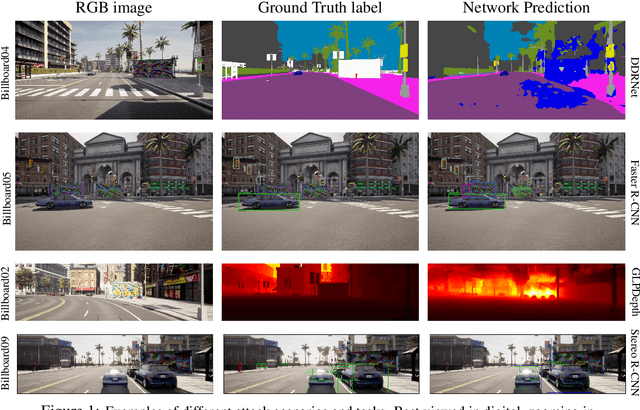
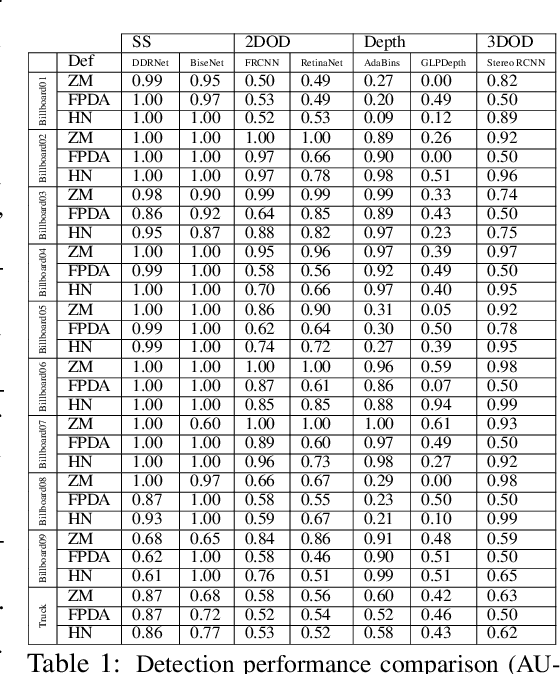
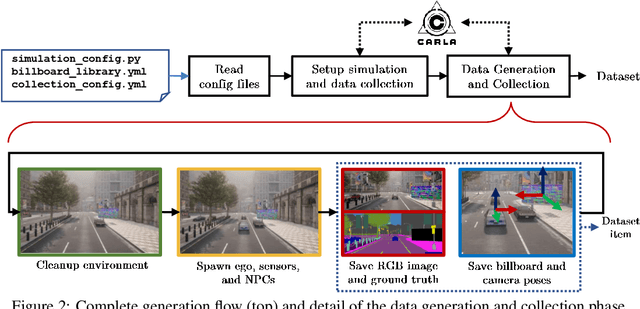
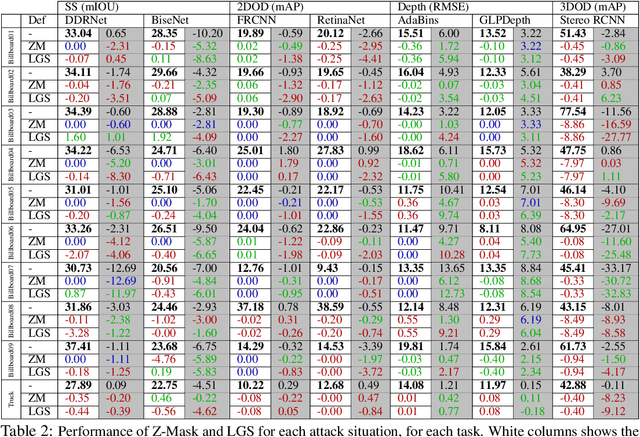
Abstract:Adversarial examples represent a serious threat for deep neural networks in several application domains and a huge amount of work has been produced to investigate them and mitigate their effects. Nevertheless, no much work has been devoted to the generation of datasets specifically designed to evaluate the adversarial robustness of neural models. This paper presents CARLA-GeAR, a tool for the automatic generation of photo-realistic synthetic datasets that can be used for a systematic evaluation of the adversarial robustness of neural models against physical adversarial patches, as well as for comparing the performance of different adversarial defense/detection methods. The tool is built on the CARLA simulator, using its Python API, and allows the generation of datasets for several vision tasks in the context of autonomous driving. The adversarial patches included in the generated datasets are attached to billboards or the back of a truck and are crafted by using state-of-the-art white-box attack strategies to maximize the prediction error of the model under test. Finally, the paper presents an experimental study to evaluate the performance of some defense methods against such attacks, showing how the datasets generated with CARLA-GeAR might be used in future work as a benchmark for adversarial defense in the real world. All the code and datasets used in this paper are available at http://carlagear.retis.santannapisa.it.
 Add to Chrome
Add to Chrome Add to Firefox
Add to Firefox Add to Edge
Add to Edge